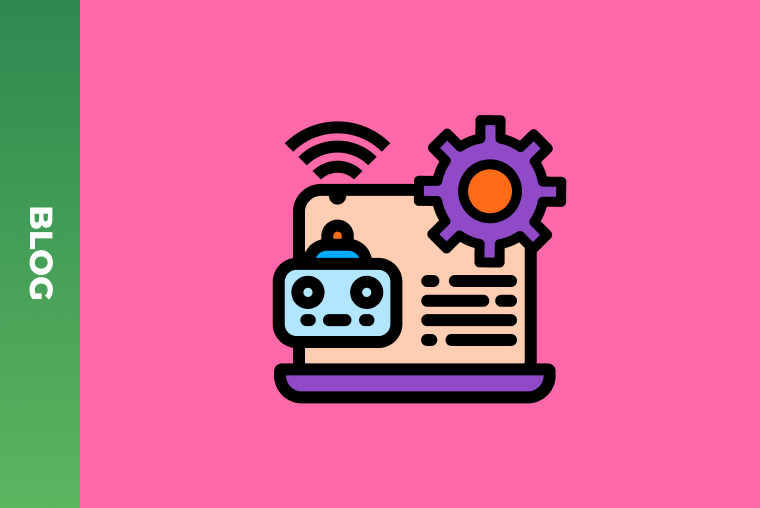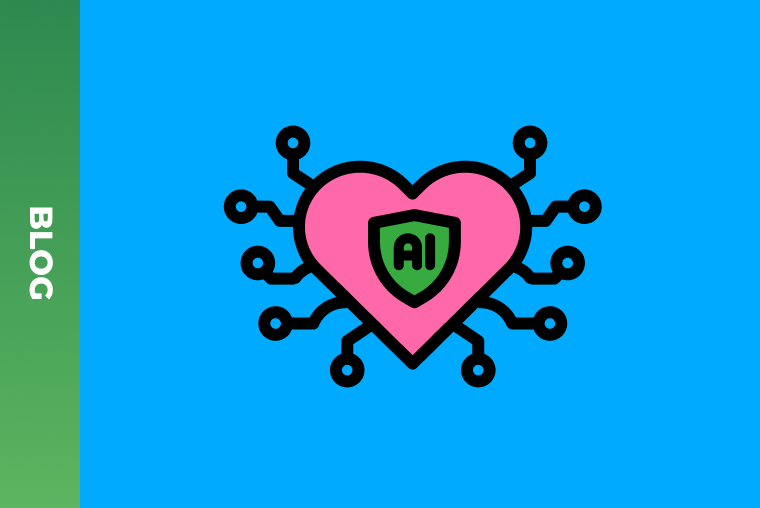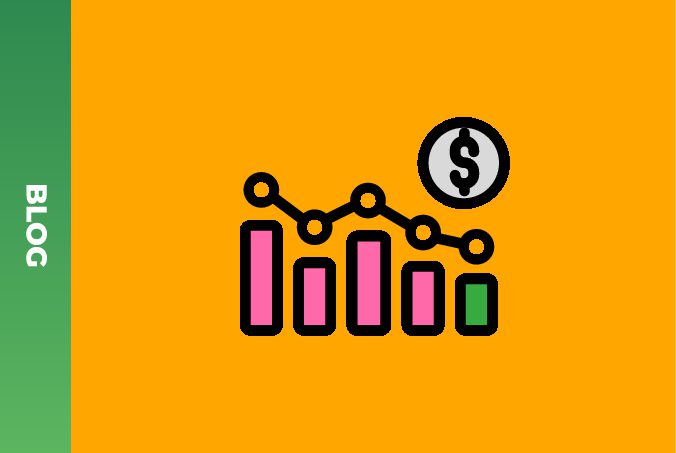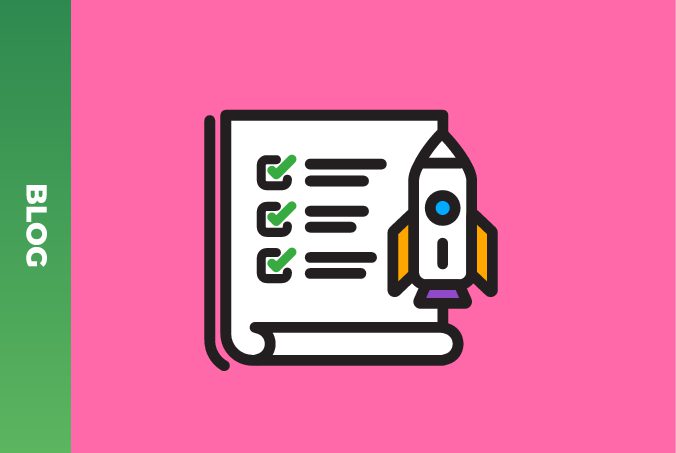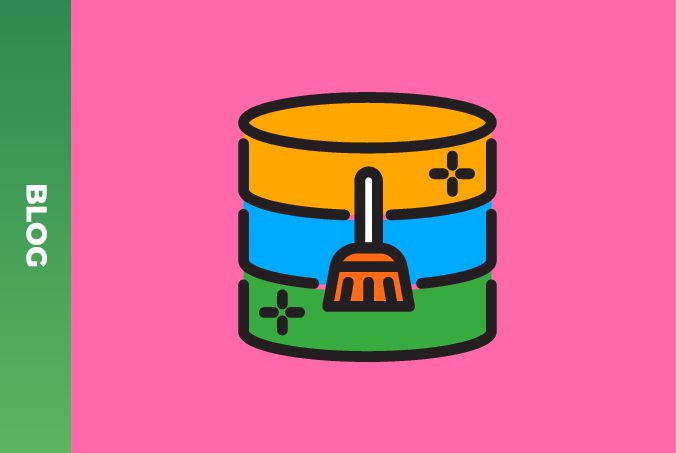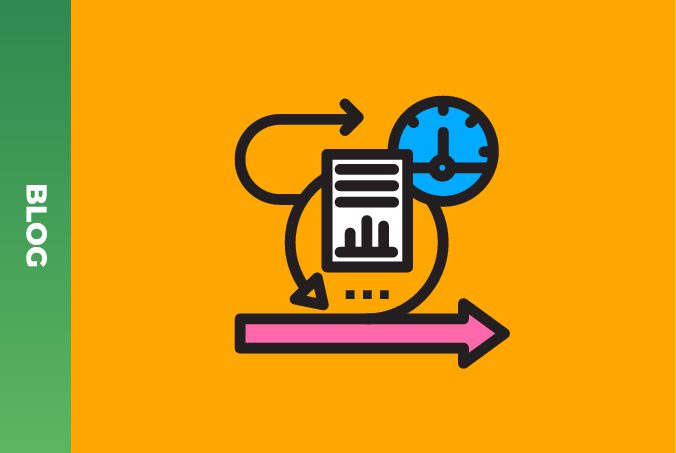The GreenM Healthcare Data Platform Framework
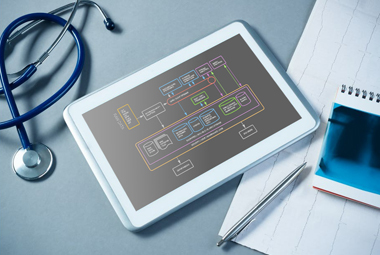
The data platform has been a staple of the healthcare industry for a while now, though only recently it has been gaining momentum, garnering increasing importance and widespread recognition. At GreenM we’ve been helping to develop software for health tech companies for seven years. Through trial and error, we have established our own approach to the data platform development process: The GreenM Healthcare Data Platform Framework, which is unique, secure and corresponds to our company’s core values.
Many who have had to build applications for the healthcare industry have found that difficult, especially for data platforms. Wait. What is our approach to data platform architecture, and what functions does our platform perform? Before answering those questions, let’s make sure all of us are on the same page by looking into the basics.
What is a healthcare analytics software?
First let’s determine what is a data platform? A data platform is a software that includes data collection, a data warehouse, business intelligence tools and analytical frameworks. This software is an agile ecosystem with an architecture of multiple secure data layers, distributed storage, and internal and external application programming interfaces (APIs). In a healthcare sector, it becomes increasingly harder to manage, update and analyze vast amounts of doctor and patient data and insurance information within a hospital or organization, especially one that is scaling continuously.
Benefits of healthcare data platforms
A unified healthcare data platform addresses numerous challenges through a single multi-purpose user-friendly solution, providing centralization, governance, security and better delivery.
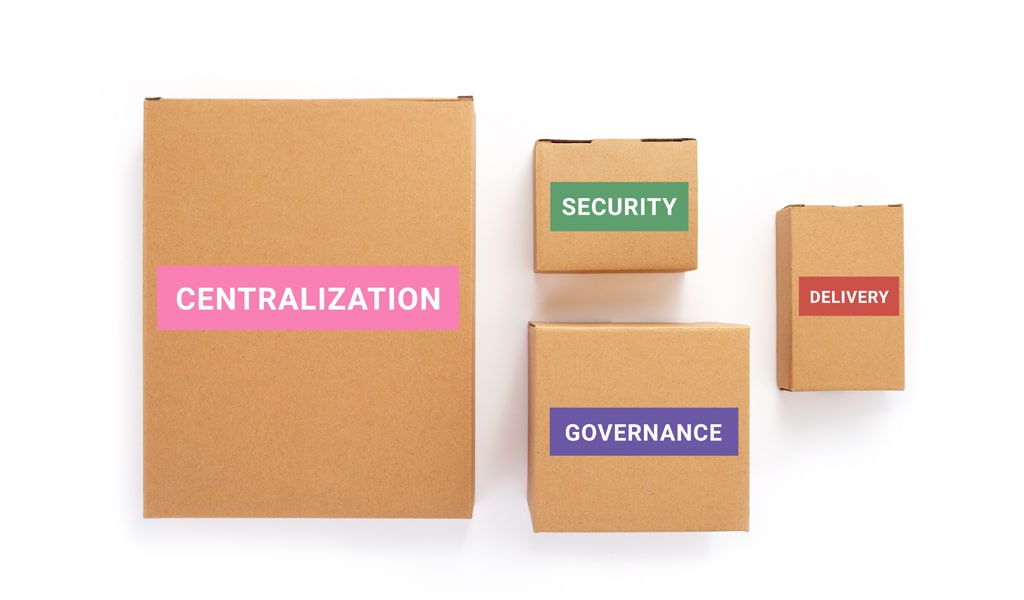
Centralization. In the healthcare sector, prescription information, doctor notes from visits and lab results often come from different input sources. Having them all systematized in a single place is clearly more convenient, especially for further processing.
Governance. The ability to oversee the whole organizational process or its separate workflows and come to meaningful solutions is among a data platform’s core functions, especially in the healthcare industry.
Security. Healthcare information requires security measures of the highest standard, and architecture layers in a well-designed platform provide that. Additionally, segmentation of outputs through security layers allows for data to be accessed only by certain individuals.
Delivery. Both stakeholders and patients benefit from all the data software can provide. With better data delivery comes complex actionable company insights, dashboards that show possibilities to improve, self-service analytics and other user-friendly solutions.
A well-crafted data platform can be a game changer for businesses, as it is beneficial for patients and doctors by simplifying and automating processes, as well as for departments within a company itself, providing on-demand analytics, predictions and ways to improve services.
What are healthcare analytics software key challenges?
Data platforms are elaborate business solutions, so there are certain setbacks awaiting during the developmental process. We divide these into business and adoption challenges for an easier differentiation between a company’s and an end user’s priorities with such platforms. Business challenges correspond to those that are related to company-side usability and functions of a software, while adoption-related are issues that could stop you from having a great product due to an incapacity to simply engage end users.
Business challenges include:
- Complex workflows and operational efficiency (for instance, system suggested recurring doctor’s appointment)
- Innovation and necessity to introduce new functions fast (lost opportunities for analytics, benchmarking, AI and data monetization)
- Data security
- Data visualizations and advanced analytics
- Multi-tenant environment
- Unification of data (integration of numerous standards, protocols and formats; combining structured EHRs and unstructured metadata; aggregation of clinical documentation cross-hospitals)
- Uneven flow of data (batches and stream)
Adoption challenges include:
- Portal usability (responsive and easy to navigate CX)
- Concerns over private data use and safety
- Lack of patient motivation (often when platforms don’t personalize)
With good communication between stakeholders of development (these are business managers, engineers, marketing, customers and users, etc.), as well as with good planning, many of these issues may be addressed before launching a healthcare data platform.
Before you build a healthcare analytics software
In order to minimize troubleshooting when the team is well into the software development process, which saves both time and cost, a thorough planning is necessary before the development pipeline starts. We created a list you can follow in developing a solid healthcare data platform.
Look into laws and regulations
Strict regulations are a distinct characteristic of the healthcare sector. These are HIPAA and HITECH for the US market, as well as state regulations for things like privacy and data protection. For the European Union, a key rule is the EU Regulation of Health Information Technology, Software and Mobile Apps and, of course, the General Data Protection Regulation (GDPR). However, depending on the market, there are numerous region- or country-specific regulations that may apply.
Have your priorities right
Sometimes, it can be easy to get lost in short-term gains. Though, when it comes to businesses, mistakes come at higher tangible prices. When building a healthcare software, especially one that becomes better, more accurate and more useful the more data you collect, business leaders must understand that establishing and prioritizing long-term goals is highly relevant.
Align the platform’s functions with the goals of the business
A data platform is a fairly universal solution, which can do numerous data- and business-related tasks, automate them and more. Yet, having unnecessary features that do not correspond to your needs will make a platform heavier and slower. So, understanding the main aims of a company with the data you collect, discussing them with the stakeholders and consulting a business-savvy professional are important to make your solution better. You also will need to adapt your software for both current and future needs.
Establish measurements
Tightly related to the previous point, KPIs and other success measurements are a way to look at the bigger picture. Define key achievements and analyze how they tie together into the long-term strategy of the company in your healthcare data platform.
Automate when possible
Your platform’s resources should be allocated smartly and add value to your business, rather than repeating and redoing simple tasks. AI, ML and advanced analytics options are an amazing set of solutions, but they should be introduced into the system carefully and in a controlled manner.
All done? It’s time to discover data platform architecture.
Design of a healthcare data platform
From both technical and business perspective, the very first step in using the GreenM Healthcare Data Platform Framework is in conducting initial risk analysis and eliminating all foreseeable issues in the design and development processes. When designing a patient platform, our approach is to look at it as a canvas that has its main functions but is also changeable.
The core functions are:
- simplifying and automating patient-provider processes
- systematizing and storing data
- providing fast scalable research and analytics
However, since the platform is also a canvas, it is flexible in its design. GreenM HDP can be enhanced with many secondary functions depending on a company’s changing needs or to be transformed completely into something different, like a patient engagement or pharma platform. Features should be designed in a way that enables a multiprocess structure with smart allocation of resources, which would allow deep analytics or troubleshooting without jeopardizing computational power for other operations.
In our development process, a core structure of a HC data platform looks like this:

Everything starts with raw data. HL7, FHIR, DICOM, X12, SFTP, FTPS, REST, IoT streams and all other incoming data (hospital visits, schedules, patient information, doctor lists, reviews, voice and video, etc.) gather together and pass through interoperability adapters ensuring strong security and governance. The main responsibilities of this layer are to register all incoming data and metadata, store it using a data access layer and forward it to the data/event streams. From there, data goes multiple ways.
The incoming data processing layer is responsible for standardization, duplicate filtering and combining raw data with the standardized records. Business modules and workflows direct the business value of a patient platform, namely for responsibilities like visit scheduling or notification alerts.
Stream data and full data are their own unique types in a patient platform architecture. Stream analytics and batch analytics layers approach them as such. For their separate types, these layers consume data from event streams or the whole dataset, enrich it with data from the data warehouse and apply business logic to generate results (KPIs, benchmarks, trends).
GET UPDATED BY SUBSCRIBING OUR BIWEEKLY DIGEST
Subscribe to GreenM Health Tech Digest and get top 5 handpicked industry insights, cases and business recommendations in your inbox every two weeks.
All data is stored in the data access layer. Your data science or ML team can access the data from here. It may include scalable blob storage, metadata storage and a SQL-compatible query engine. Additionally, when a healthcare company works with sensitive data, third-party providers or in-house teams need to be limited by the access control component. With it, teams with limited access will be able to securely access only certain parts of the data.
Real-life cases for data software advanced feature design
Quite often, healthcare companies need a solution that isn’t exactly brand new. Customers want an older, more strict data platform made elastic or updated with newer versatile features. Below we describe two of such cases: how advanced reporting and in-house data science can be implemented architecturally in an existing platform architecture. Both of them are for applications that already have rich business logic modules.
Feature: Sophisticated reporting design
Sophisticated reporting is a feature for a business that is growing, together with a load on its operational data store, causing a noticeable impact on resource utilization and degrading performance. At the same time, advanced reporting is a great opportunity for business’ product growth.
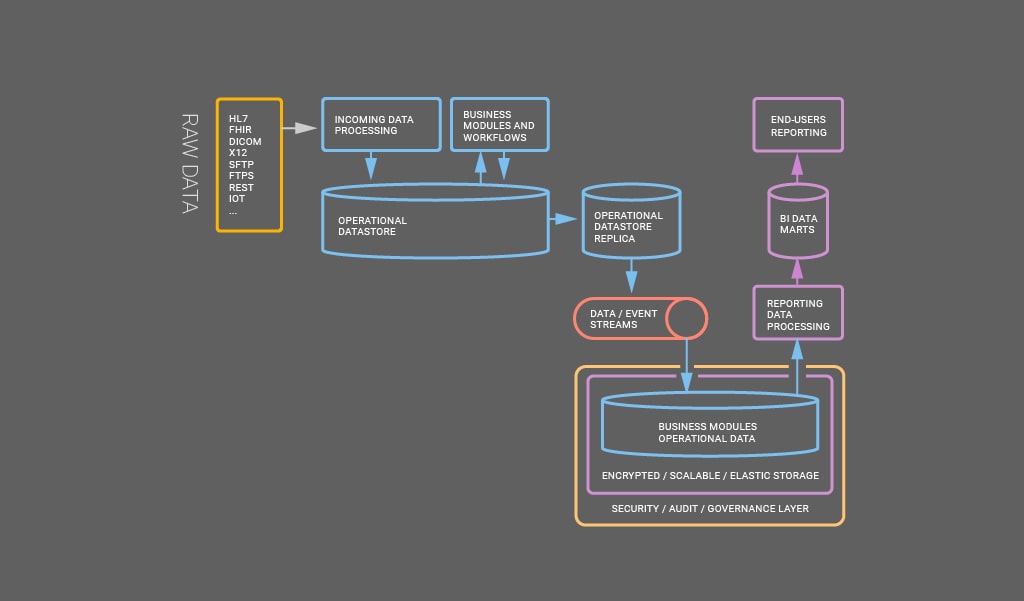
How to solve it: Introduce replication and switch reporting to the read-only replica to solve current operational data store performance issues, while engineering teams develop new reporting. This can be done through replicating the operational data store to the data access layer, then implementing data extract capability to create a snapshot of the current state data on the same layer. On replica, data capture is implemented, which is then sent to Data/Event Streaming. Change the process so that the data access layer is reading data from the streams, then introduce data mart and stream reporting-ready data to this location. Switch reporting to the data mart. This way, the system is ready to implement sophisticated reporting capabilities based on the data access layer and new data mart.
Feature: Enhanced in-house data science and analytics
This is a great case for a business that sees a potential in enhanced user experience capabilities, such as smart suggestions, automatic scheduling and semi-automatic patient visit reports. The major success obstacle is a set of desperate operational data stores (one for each module) that constantly evolve, and the huge amount of time spent to extract and clean the data.
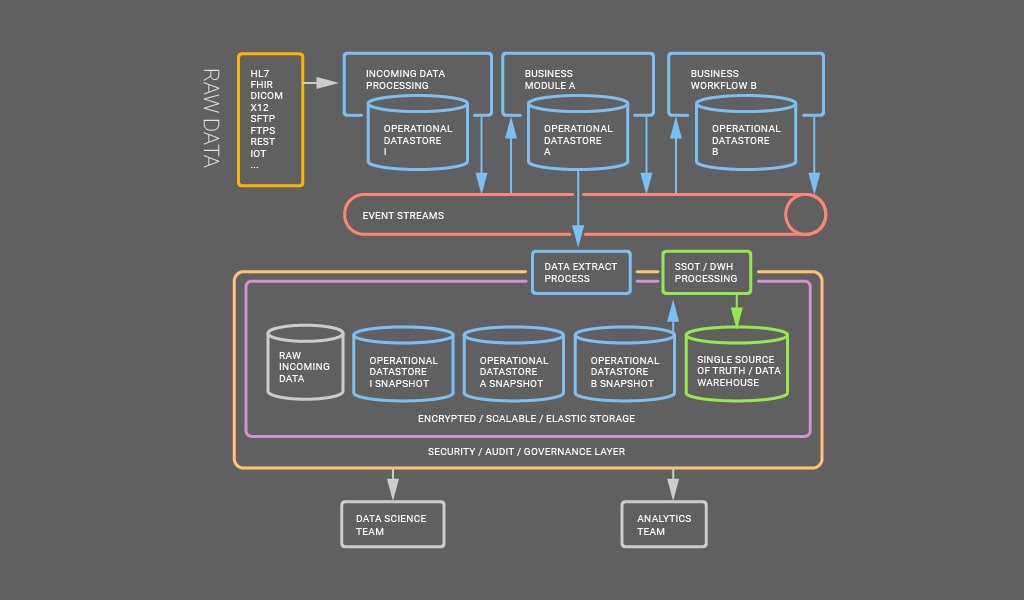
How to solve it: Similar to the previous solution, one of the first steps is to create a snapshot of the current state of all operational data and send it to the data access layer on a regular basis. Then, create a bridge to create a consistent and stable state of the data. It can be filled in by data warehouse implementation, including schema metadata and secure SQL-compatible access to it, on top of the cloud data storage. Now data from operational data stores fills the warehouse. This way, your data science team has access to more information to work with.
For example, a telehealth platform built in a service-oriented (or microservice) manner contains separate operational data stores for patient data, visit and schedules, payment data, and so on. In such a case, a data science team would need to have access and query all these disparate data sources. With a data platform, these data stores can be extracted to the data access layer, and queried by a data science team as if they are a single data store.
These improvements are among the simpler and more used in the healthcare sector, often related to expansion of a company’s size and markets.
The steps presented in this article are just a roadmap of healthcare data software the way we do it at GreenM. Though considering high demand for high quality care apps, these steps can be useful for other engineers and solution architects as an example of something that is optimized for scalability, security and a better user experience.
In conclusion
A data platform is an agile ecosystem with an architecture of multiple secure data layers, distributed storage and internal and external APIs. This software is a single multi-purpose solution that includes data collection, a data warehouse, business intelligence tools and analytical frameworks providing centralization, governance, security and better delivery.
Healthcare data platforms are beneficial for patients, doctors and businesses themselves by providing a user-friendly solution for centralization, governance, security and better delivery all in one place.
Two separate types of challenges exist for developing such software. These are business and adoption challenges, corresponding to potential company and end-user issues that should be explored and addressed beforehand.
Before building a data platform for healthcare, a company must look into laws and regulations it needs to follow in data collection and privacy, set priority features, align the platform’s functions with the goals of the business, establish measurements and find parts of the process that may be automated.
The GreenM Healthcare Data Platform Framework has a complex architecture that emphasizes scalability and security. It consists of raw data, interoperability adapters, data/events streams, an incoming data processing layer, business modules and workflows, stream and batch analytics, a data warehouse and a data access layer.
Want to stay in the loop? Subscribe to GreenM Health Tech Digest and get top 5 handpicked industry insights, cases and business recommendations in your inbox every two weeks. Hit the SUBSCRIBE button below to learn about digital health with our newsletter or read more news here!
WANT TO GROW YOUR HEALTH DATA EXPERTISE WITH GREENM?
We deliver a healthcare-focused data development services to build a successful solutions, solve data challenges, speed up the delivery.
References:
Building a great data platform | McKinsey & Company
The next generation data platform | Deloitte Touche Tohmatsu Limited
EU regulation of health information technology, software and mobile apps | Thomson Reuters
5 Important Regulations in United States Healthcare | Maryville University

